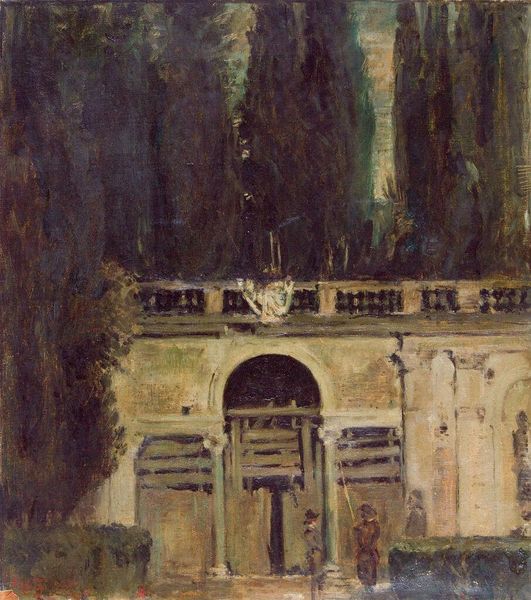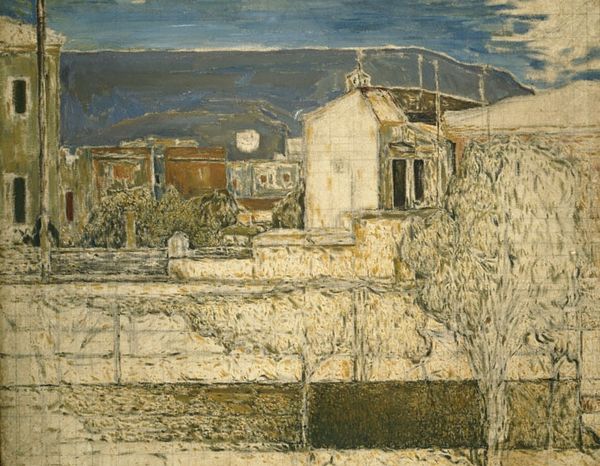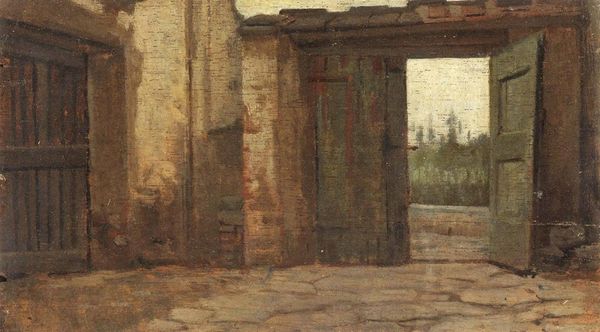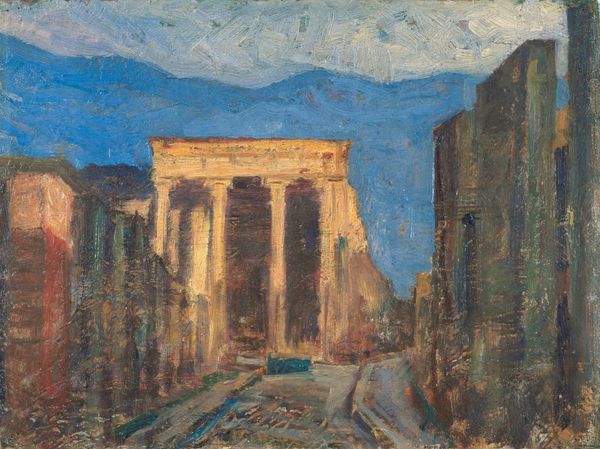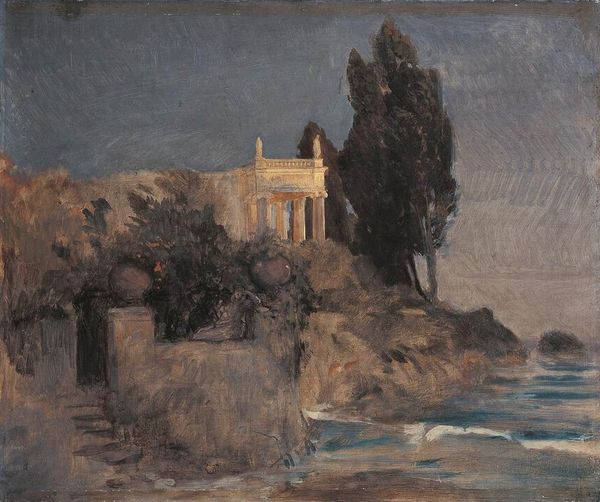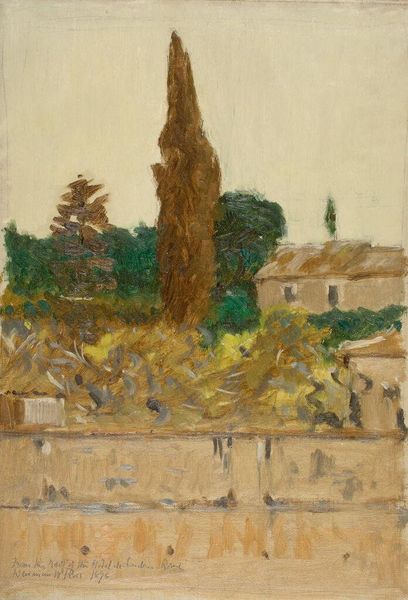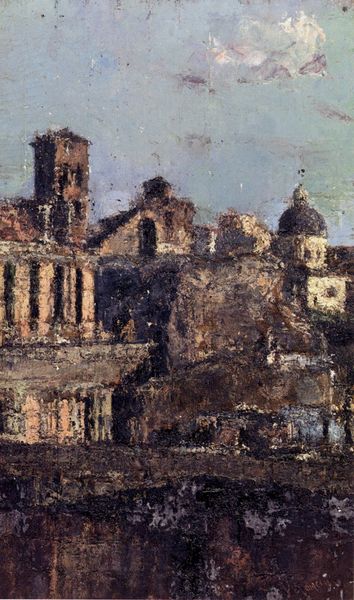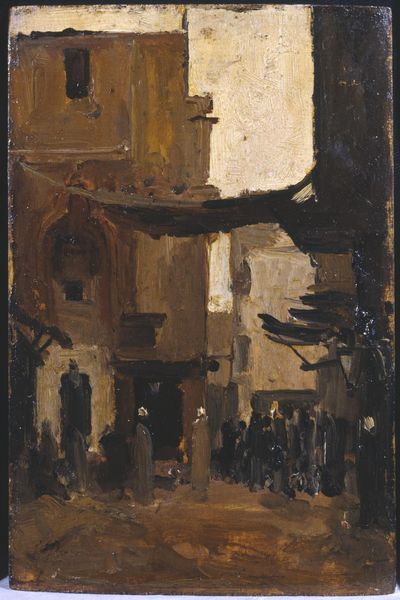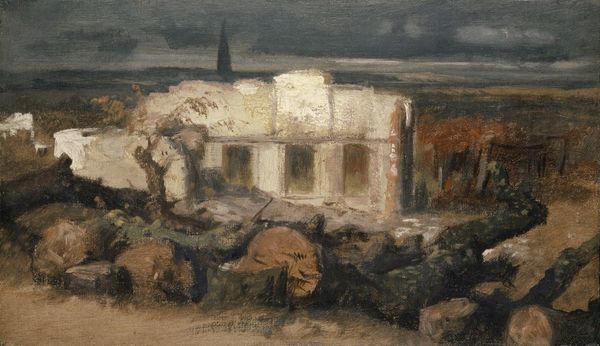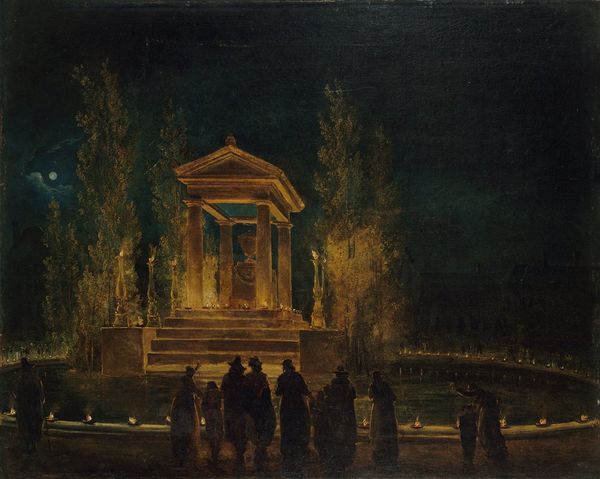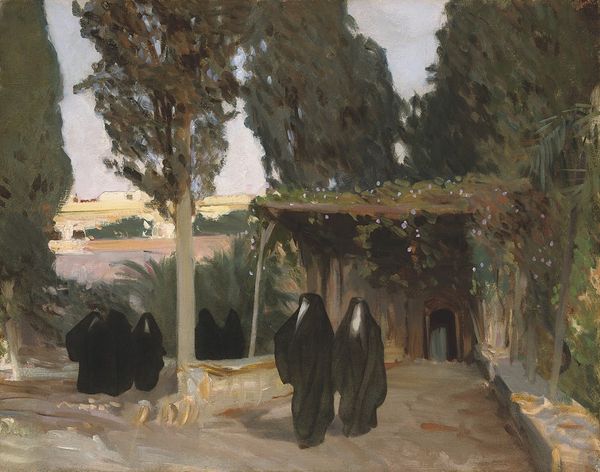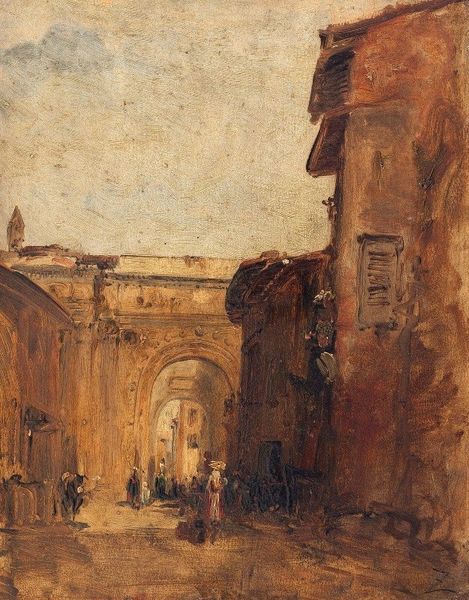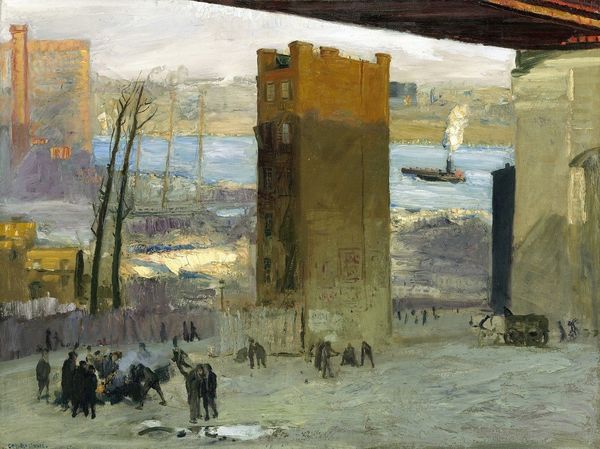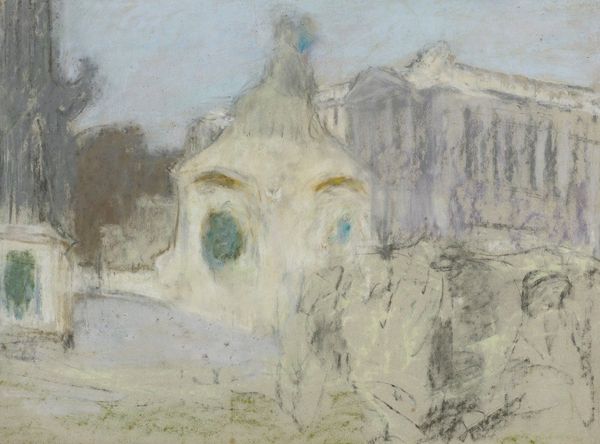
Copyright: Public Domain: Artvee
Curator: Władysław Czachórski’s “Cemetery in Venice, sketch,” completed in 1876. Editor: It feels immediately heavy, doesn’t it? The somber colors, that walled structure with its blank, empty doorway... Curator: Exactly! Let's consider the very materiality, shall we? Look at the layering of the oil paint on the canvas – clearly a sketch, but observe how that visible process amplifies the sense of transience, the feeling of something unfinished, echoing the very theme of mortality itself. Editor: That stark doorway framed in white stone really grabs me, contrasting sharply against the worn, red brick of the cemetery wall. The opening it provides really drives home the imagery of moving into the unknown. Did Czachórski intend this as a symbol, a gateway to the afterlife? Curator: Perhaps. Although, I think we should think about how the use of materials communicates so much more than subject alone. Take the texture of the wall: aged, patched, and eroded. These effects weren't achieved overnight. How many iterations of process, of labor went into the application here? Editor: Good point. Beyond a mere depiction, the brick, as symbol, offers a meditation on time. It almost looks like a stage set too. This canal-side scene feels intimate, yet theatrical. Is it an accident or a comment that those posts in the water have almost prison-bar like patterns? Curator: These are the navigational posts, which are fairly standard markers of Venice; but to me it emphasizes the labor it would have taken to even construct this city—to see how these spaces speak to commerce as well as death, of the everyday mixed in. We mustn't isolate only meaning without grounding to how Czachorski communicates through labor. Editor: Agreed. The artist draws on Venice, its waterways, its relationship to both life and death—making symbols inseparable. The black-and-white striped posts, that doorway to shadows...he has an understanding about death's weight. It's more than a graveyard. Curator: Absolutely. Seeing Venice as a city built not just on water, but on layers of work and material exchange, completely reframes its allure! Editor: Well, the shadows and architecture leave you with a deep emotional and lasting cultural aftertaste that resonates. Curator: I think seeing the materials as active signifiers rather than passive vehicles does, too. They’re not *just* there to represent something else.
Comments
No comments
Be the first to comment and join the conversation on the ultimate creative platform.
